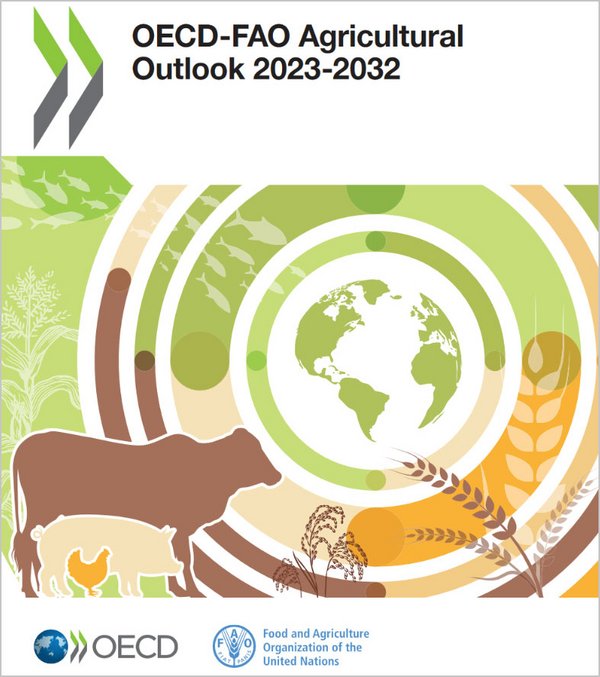 Read this article in French
Read this article in French- Share this article
- Subscribe to our newsletter
Agricultural Outlook 2023-32
Global production of crops, livestock products and fish are projected to grow at an average annual rate of 1.1 per cent during the period, half the pace recorded in the decade ending in 2015, according to the Agricultural Outlook 2023-2032 released by the Food and Agriculture Organization of the United Nations (FAO) and the Organisation for Economic Co-operation and Development (OECD) in July 2023. Total food consumption is expected to rise by 1.3 per cent per annum to 2032, indicating an increase in the share of agricultural commodities used as food.
These projections assume a fast recovery from recent inflationary pressures, normal weather conditions, no major policy changes and on-trend evolution in consumer preferences. The possibility that inflationary pressures remain persistent poses downside risks to global food demand and production.
In a special assessment of key farming input prices, which have risen significantly in the past two years, the Outlook calculates that every ten per cent increase in fertiliser prices leads to a two per cent increase in food costs, with the burden falling hardest on the poor, who spend a larger share of their budget on food. The Outlook highlights the importance of policies to ensure greater efficiency and resilience.
The Outlook offers decadal projections for cereals, vegetable oils, dairy products, meat, sugar, fish as well as cotton, tropical fruits, pulses and agricultural output used for biofuels. It also includes projections for expected regional trends in greenhouse gas emissions from agriculture and incorporates first-time preliminary analyses of the role of food loss and waste.
Greenhouse gas emissions from agriculture are expected to increase by 7.5 per cent in the next decade – just less than half the projected output growth – indicating a significant fall in the carbon intensity of agricultural production. The livestock sector is projected to account for 86 per cent of the increased emissions.
(FAO/ile)
Read more on the FAO website and download the report on the OECD website





Add a comment
Be the First to Comment